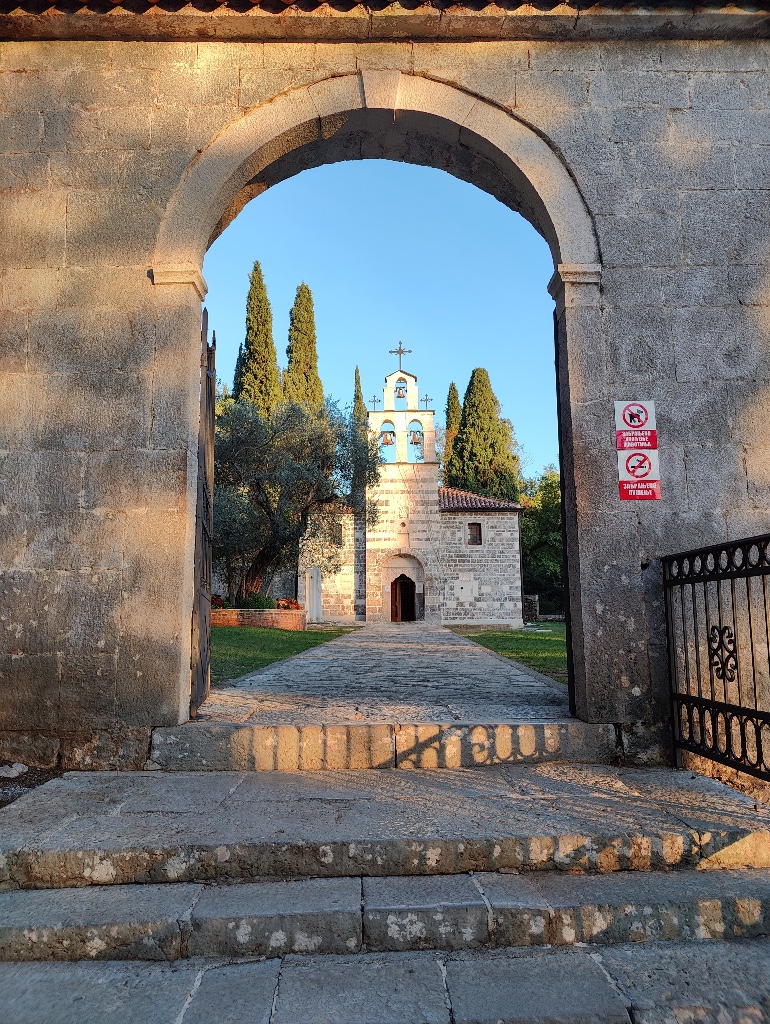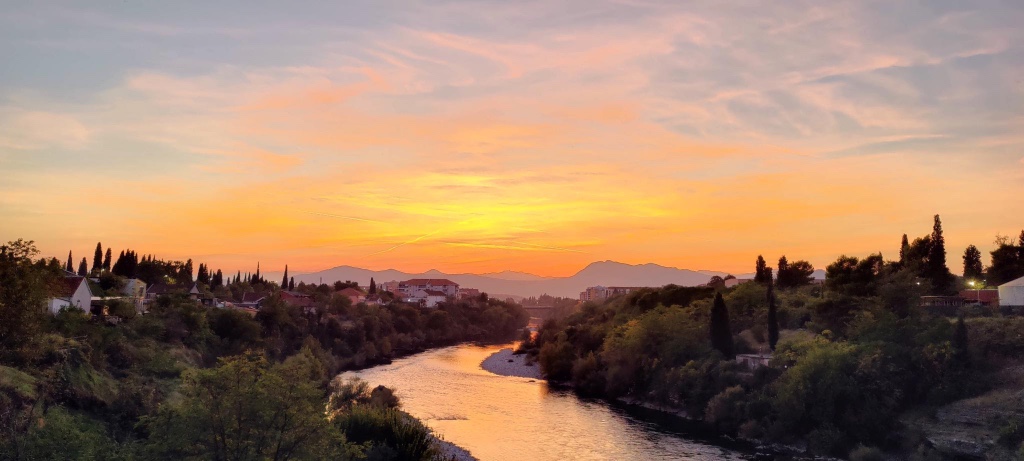
The journey to Montenegro was one I will never forget. Despite buying our tickets in advance, our driver oversold the bus so we had to stand the entire 2.5 hour ride. That alone was not so bad, but the border crossing was a nightmare. He made the dozen people standing sit in isle of the bus when we were crossing the border. We had to get off said bus and go through a checkpoint on the Albanian side, get on the bus again for 30 minutes to go another 100 meters. Only then to get off the bus again to go through the Montenegrin border (hiding both times). The travelers we met all took it in good humor, it was our final memorable ride through the Albanian countryside. A deep relief washed over me when we stopped in Podgorica, gladly walking the 15 minute trek to our new place. We are staying on the first floor of a small studio apartment on the outskirts of town. The best part about our location is being two blocks from the farmers market, located right next to the Mall of Montenegro. It is filled with seasonal fruits and vegetables, nut and olive vendors and a refrigerated room full of cheesemongers. You can pick up a loaf of delicious fresh bread or burek for .80€ at Sara bakery. There are a lot of people selling the same thing, but we met a lovely Nona whom we purchased or produce from during our monthly stay. She always gave us a little gratis, some lemons, a pomegranate, or eggplant and a handful of peppers. It was very smart on her part because we became religious customers.
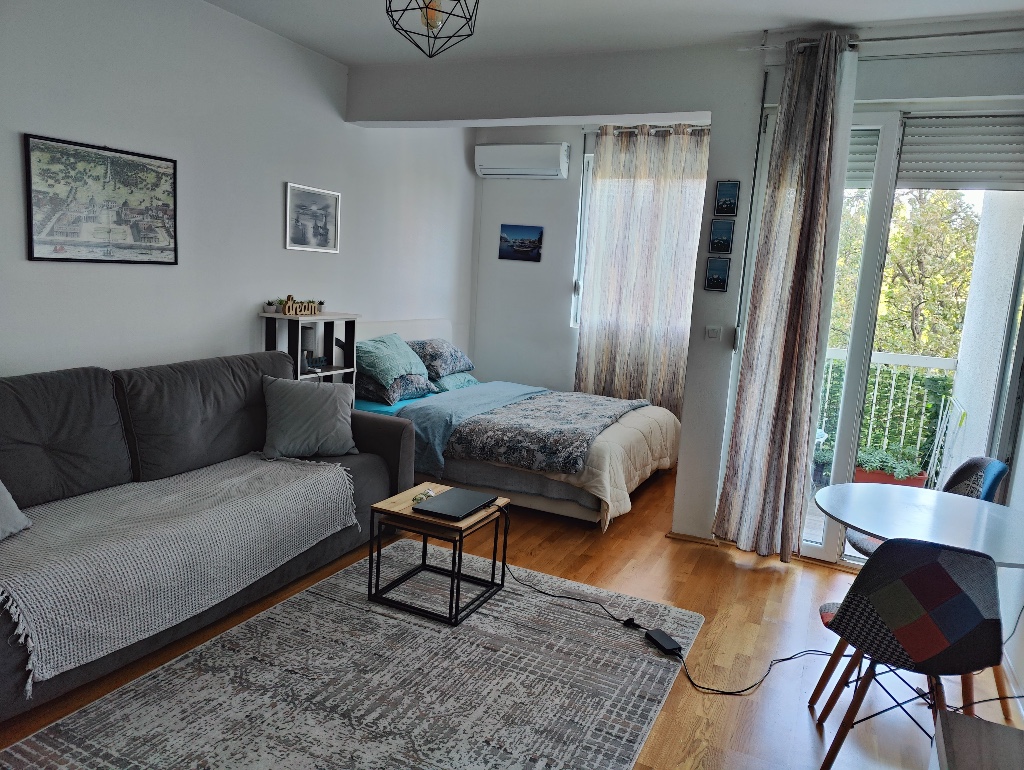

Podgorica is a pedestrian paradise, large sidewalks and bike paths stretch through this thoughtfully planned city. ‘Under the Hill’, the Montenegrin capital city has existed before the Stone Age and was once populated by the Illyrian tribes Labeates and Docleatae, whom also occupied what is now Shkoder, Albania during the Iron Ages. Trade flourished in ancient times between the Republic of Ragusa and Serbia, this boosted its development of economic power and military strength. The region has been rife with war, from WWI being occupied by Austria-Hungry, then later merged with the Kingdom of Serbia. During WWII Podgorica was mercilessly bombed by Yugoslavia completely destroying the city. It then became a part of the Socialist Federal Republic of Yugoslavia. Montenegro recently claimed independence in 2006, making it a very young but thriving city.
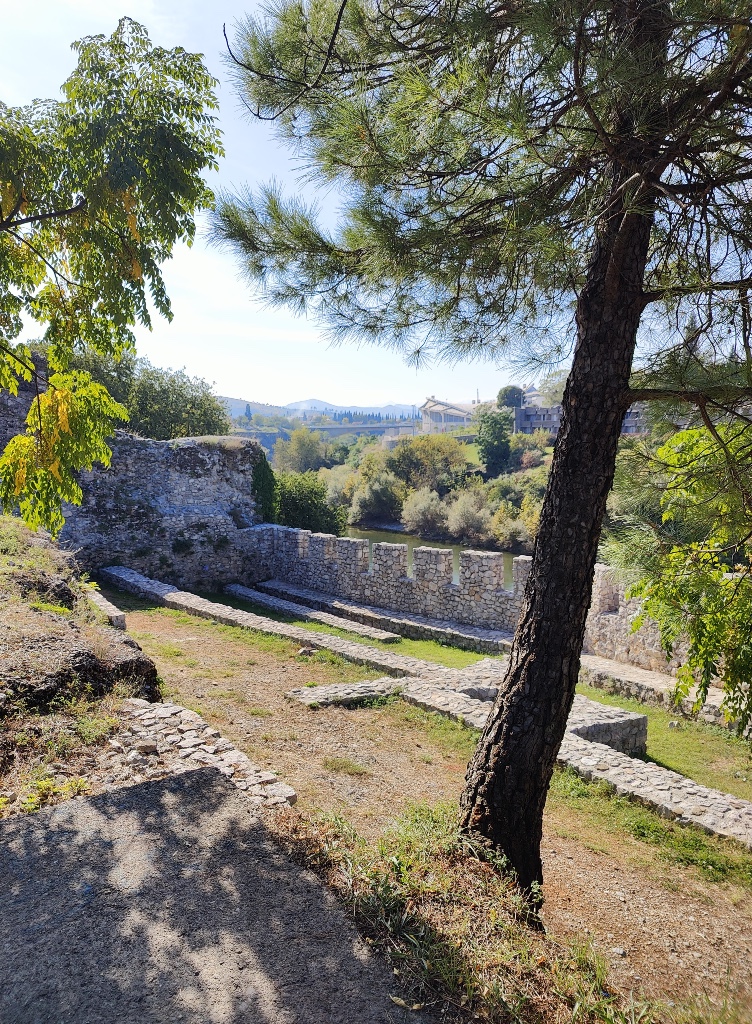
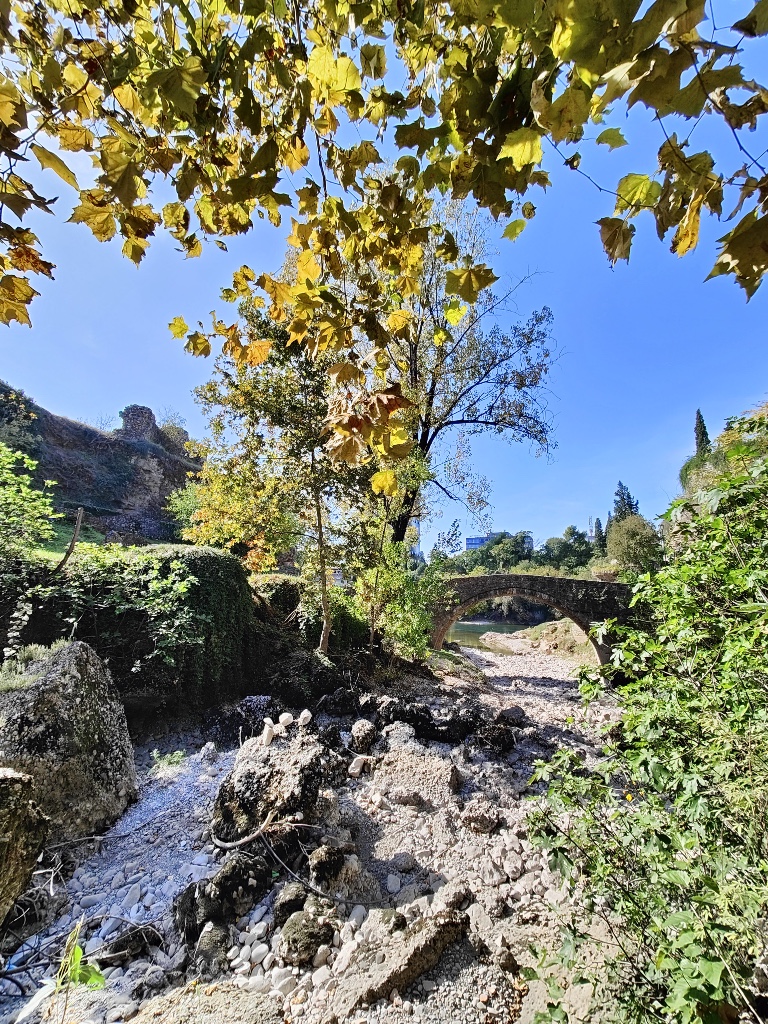
The Ribnica Fortress was built late in the 15th century in the time of Ottoman Sultan Mehmed Kahn, but was destroyed in 1878 when a thunder strike triggered an explosion on the sites ammunition warehouse. The ruins are easily walkable, although there is not much to the fort it offers some amazing views of the city. It is accessible by the Old Ribnica River Bridge, now bone dry from the droughts of the past summer.
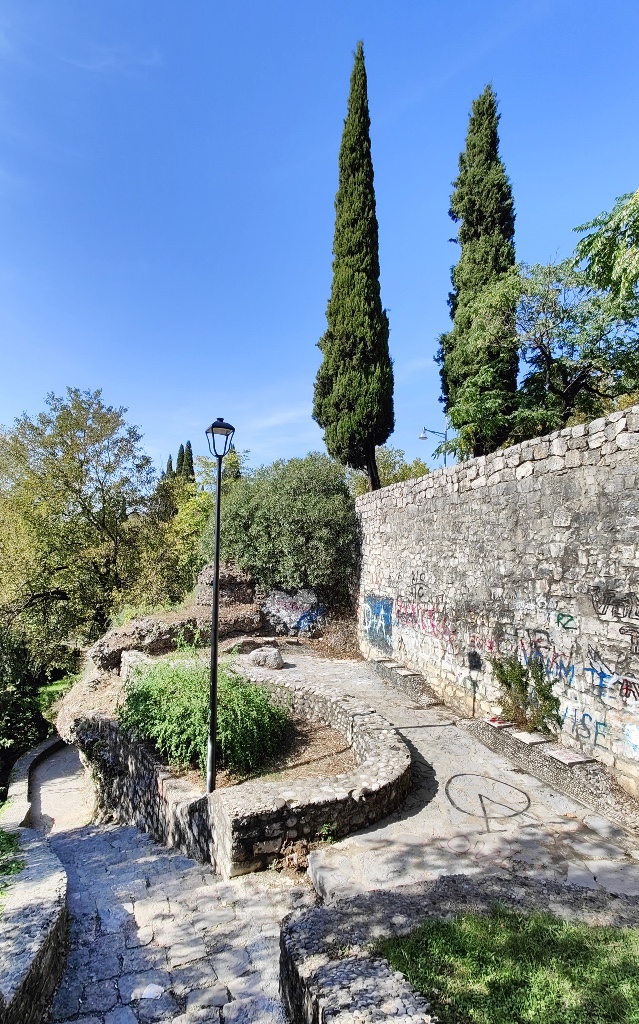
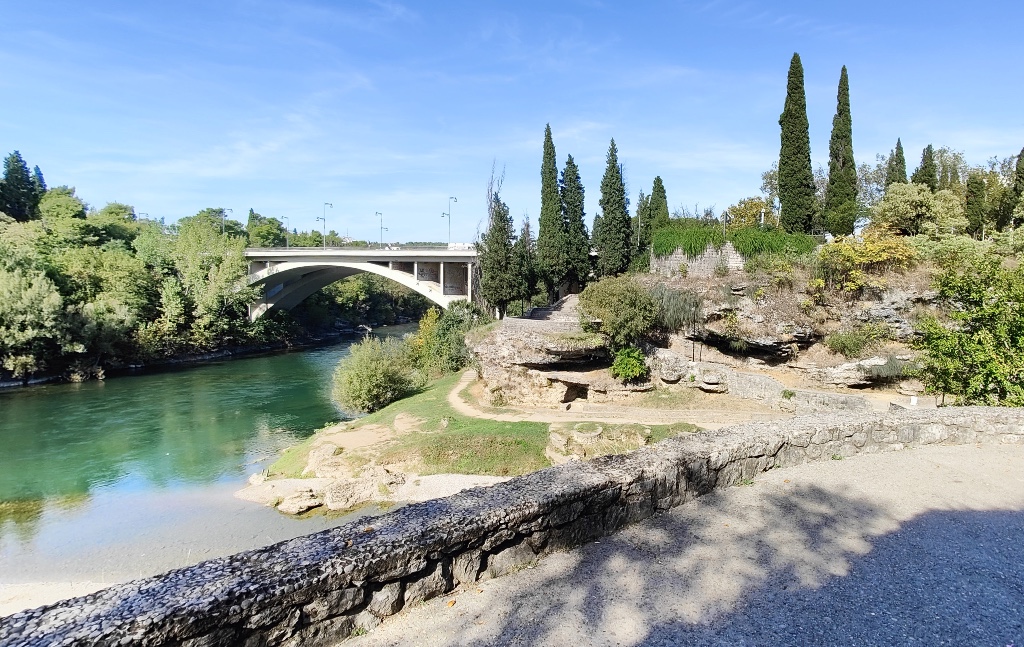
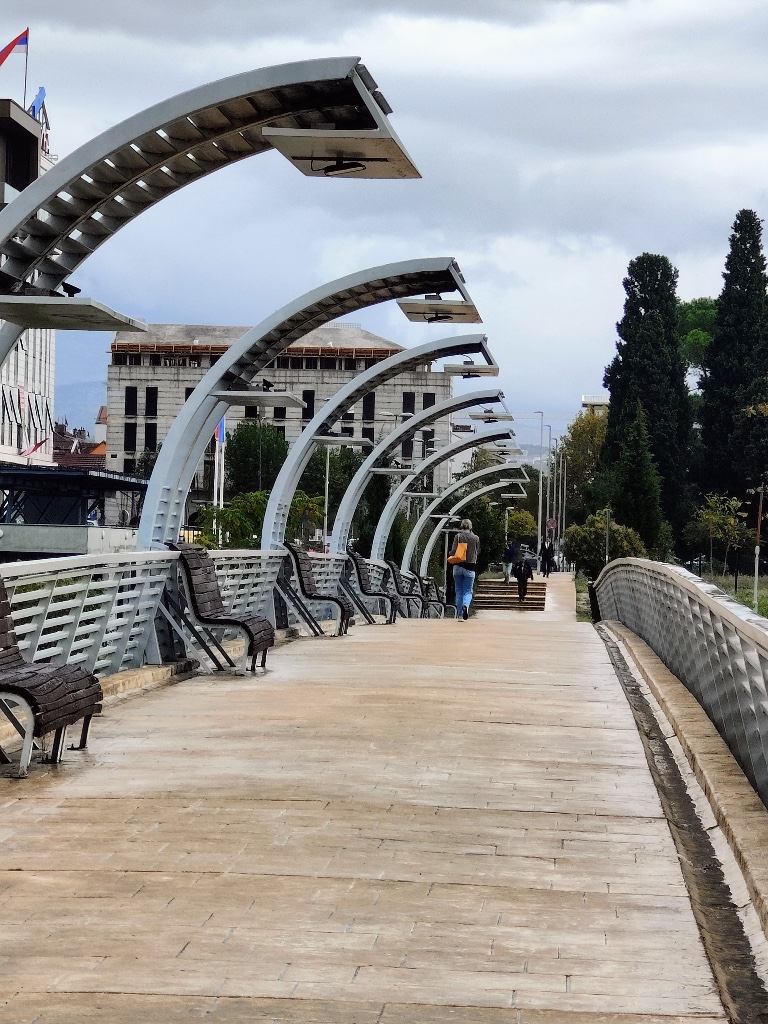
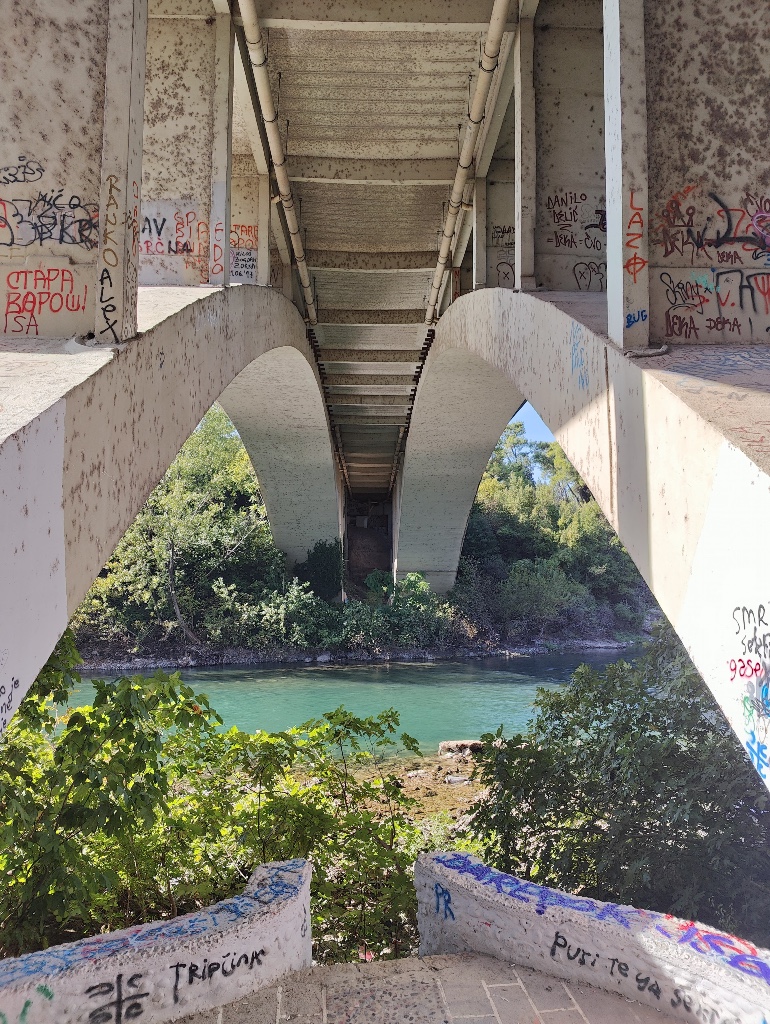
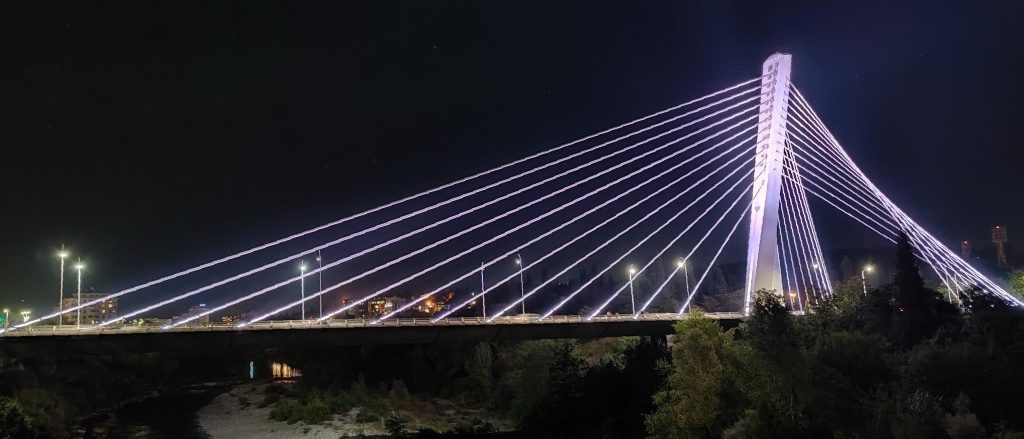
There are several ways to get across the Moraca River but my favorite is taking the Moscow bridge to see the Millennium Bridge in its full glory. It starts in Podgorician Park, a small but lovely green space near the heart of town. It connects to the monument of Vladimir Vysotsky, a Soviet singer, songwriter and poet. Underneath the bridge is a small rocky beach and bar-cafe to enjoy a drink by the water. Funnily they were playing Sweet Home Alabama while we enjoyed a Margarita made with lemon and a splash of Absinthe. A truly strange mashup, but the sounds of the river and views of the bridges are fantastic. Sadly it seems to be closed now that the weather is cooling off, but it seems wasteful as during the day it is still in the 20s (70s).

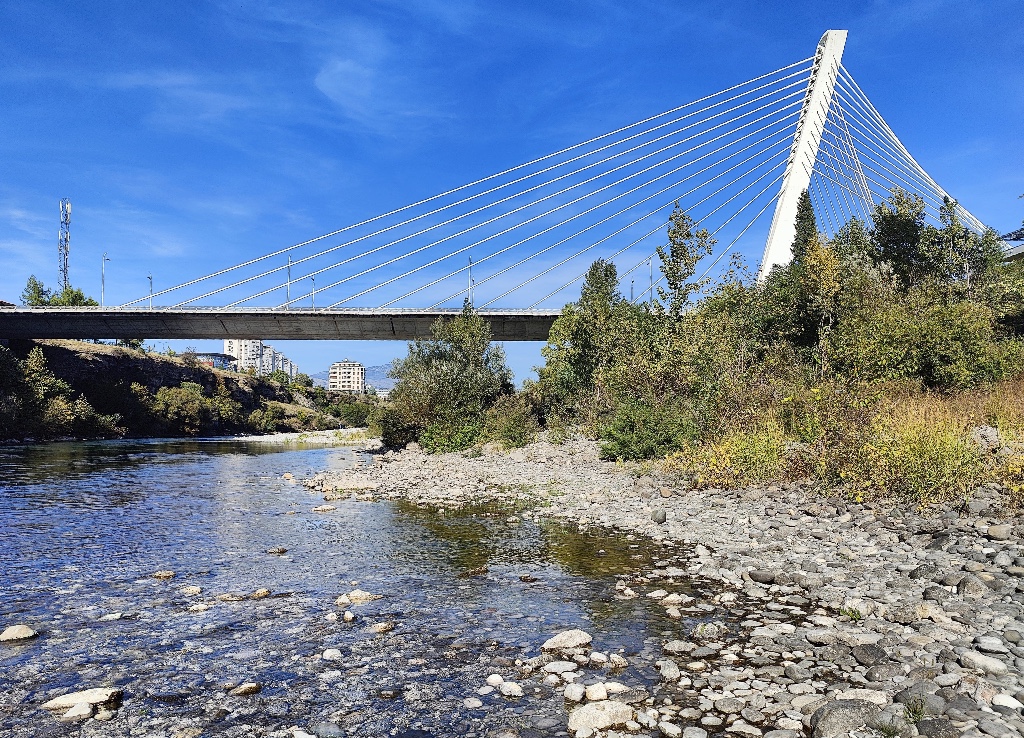
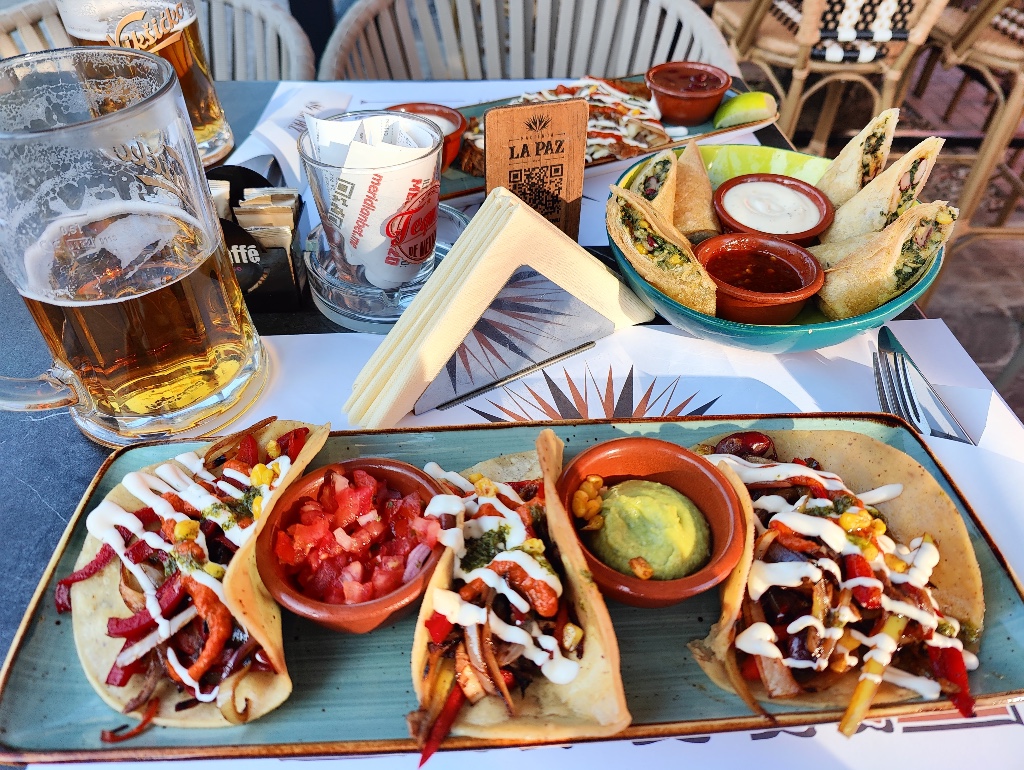

The food is excellent here, there are a lot of different offerings that you don’t find elsewhere in the Balkans. There are a few Tex Mex places and a couple Asian places too. Zheng He is the best if you are wanting Chinese, it isn’t spicy but they at least serve their dishes with a side of homemade chili oil which can be applied liberally to anything that needs extra kick. We had a great lunch at La Hacienda, their veggie tacos were made with oyster mushrooms, peppers, onion, black beans and corn. We shared some southwestern egg rolls, the closest thing to an egg roll in the Balkans so far. You can find spring rolls in some places, but so far no true egg rolls in sight. It had also been eons since we had western style barbecue, our favorite place to eat so far is Big Horn Gastropub. Their menu comprises varying smoked meats served with potatoes of course! They also have pizza, salads and tortillas (wraps)… a popular Montenegrin snack that can be found most everywhere. It had been awhile since I had consumed any meats so one afternoon we decided to share their mixed platter which consisted of 4 different types of sausages, two kinds of ribs, smoked wings, potato three ways and a scattering of onion rings and tiny peppers. It was all seasoned and smoked to perfection, needless to say I am back to taking a break from meat.

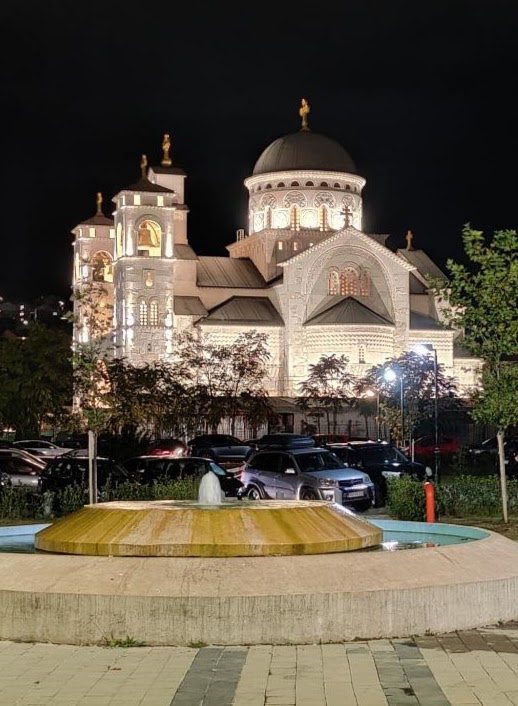
Walking at night is one of our favorite pastimes, especially now there is a feel of fall in the air. The Clock Tower in Becir Beg Osmanagic square is one of the few Ottoman landmarks that survived the bombing in WWII. The Cathedral of the Resurrection of Christ is absolutely stunning at night. Regretfully I couldn’t get a great picture with my cell phone camera, the photo doesn’t even come close to how spectacular it truly appears . The night life is pretty great here too, there are a few really special places in town. If you are looking to spend a night outside then the Itaka Library Bar is the way to go. On the weekends local DJ’s tag team on the turntables while locals dance and dogs play in the adjacent park. They have delicious coffee cocktails and local craft beers. It was once a Turkish bathhouse for women, but now a bar-cafe. Inside has three floors, the top being a chill out area to hang with friends or read the books you bought Karver bookstore (next door) in a more intimate atmosphere. It hides underneath V Proleterske Brigade, making it feel like a secret hidden gem, but known to locals as the coolest place to hang in town.

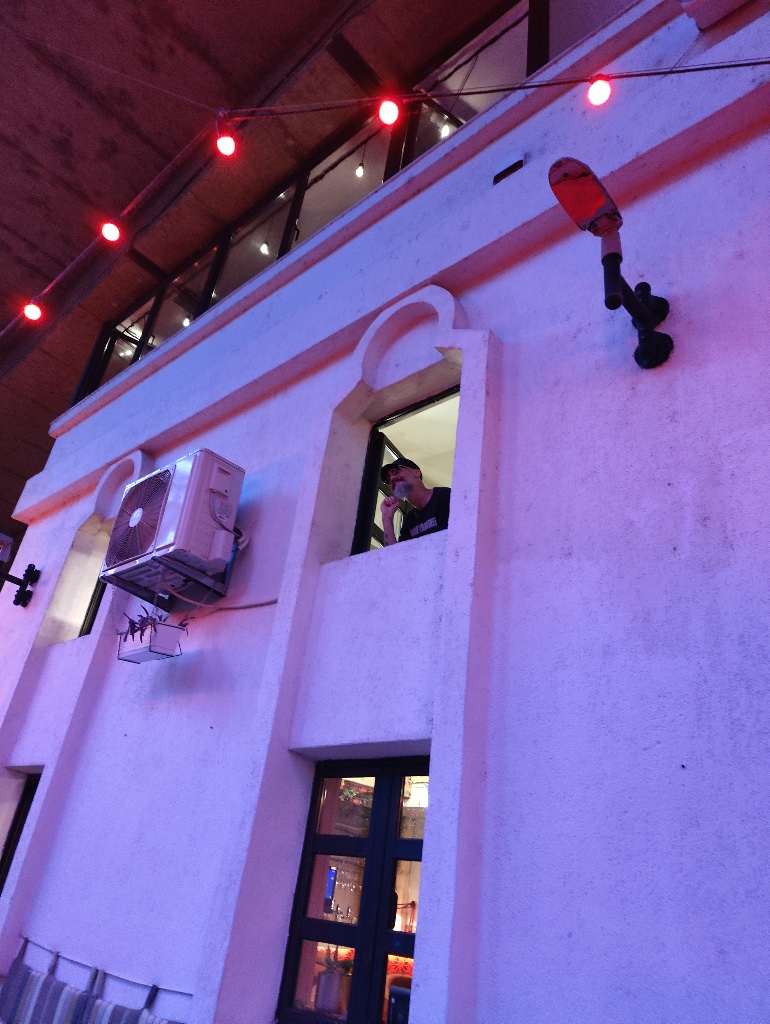
If it is an indoor experience you are searching for check out Kolotov Rep, the drinks are thoughtfully crafted and the service is amazing. We spent a rainy night here sheltered from the welcome rain. Our server took the time to write down his favorite places to go to in Montenegro once he learned we were spending a couple of months here. The people are curious and friendly, we have had some great conversations with locals wanting to share the best of their lively city. What is most special about Podgorica is that it is not a tourist heavy, the most popular places are mostly on the coast. The average age of the population is 35, which makes this a fun and easygoing place to spend some time.
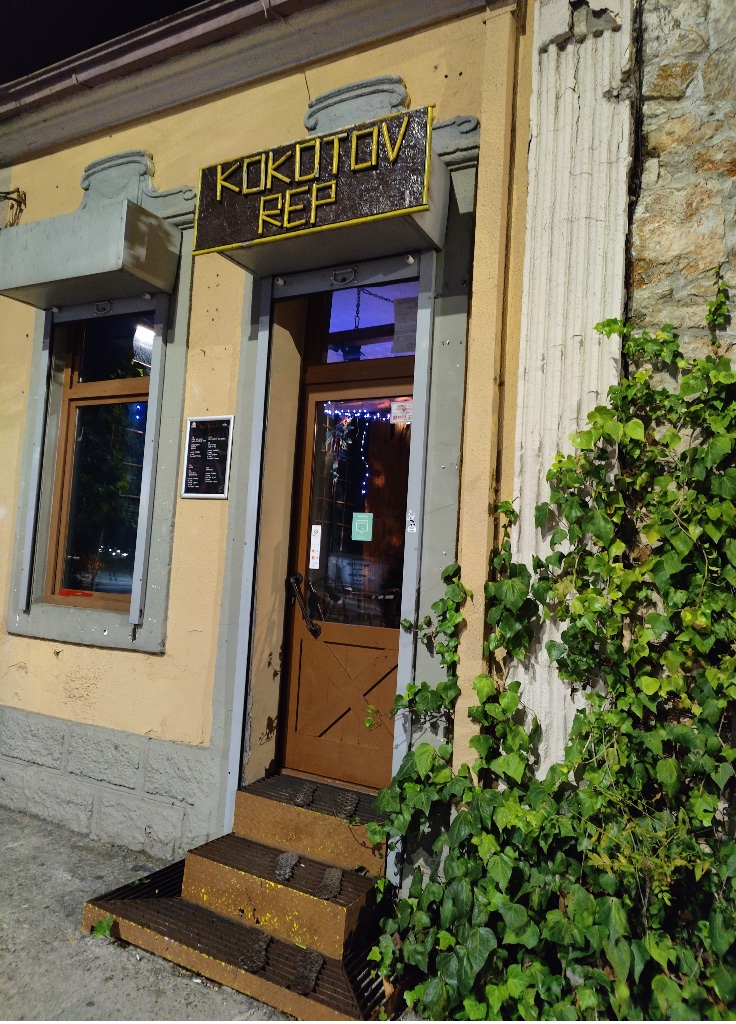
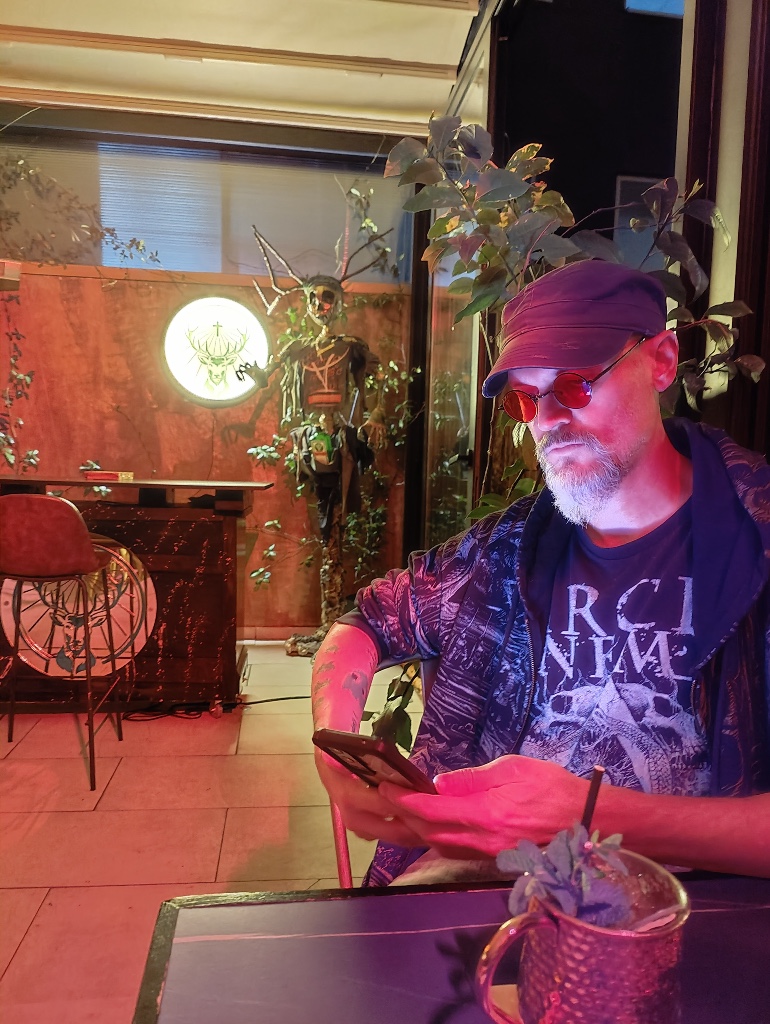
One of the jewels of this place is Gorica Park, a huge green space slightly North of the city center. There are a couple of cafes (Klub Bocara and Cafe Sto Cinis) for your coffee and juice fix, or have a Niksicko beer, the most commonly found lager in Montenegro. The Trebjesa brewery produces 53 million liters of Niksicko a year and it is enjoyed all over the Balkans. Across from Sto Cinis stands the Mausoleum to the Partisan Fighter, it is considered the most significant WWII monument in Podgorica. It houses the remains of two revolutionaries and 66 national heroes of the People’s Liberation War and is also dedicated to all WWII victims in Montenegro. The monument is megalithic in size, the “canopy house” looms over the two memorial statues of the revolutionary partisans, both three meters tall. It was created by Drago Durovic, a famous Montenegrin sculptor. The opening ceremony on July 13, 1957 marked the day of the uprising in Montenegro.
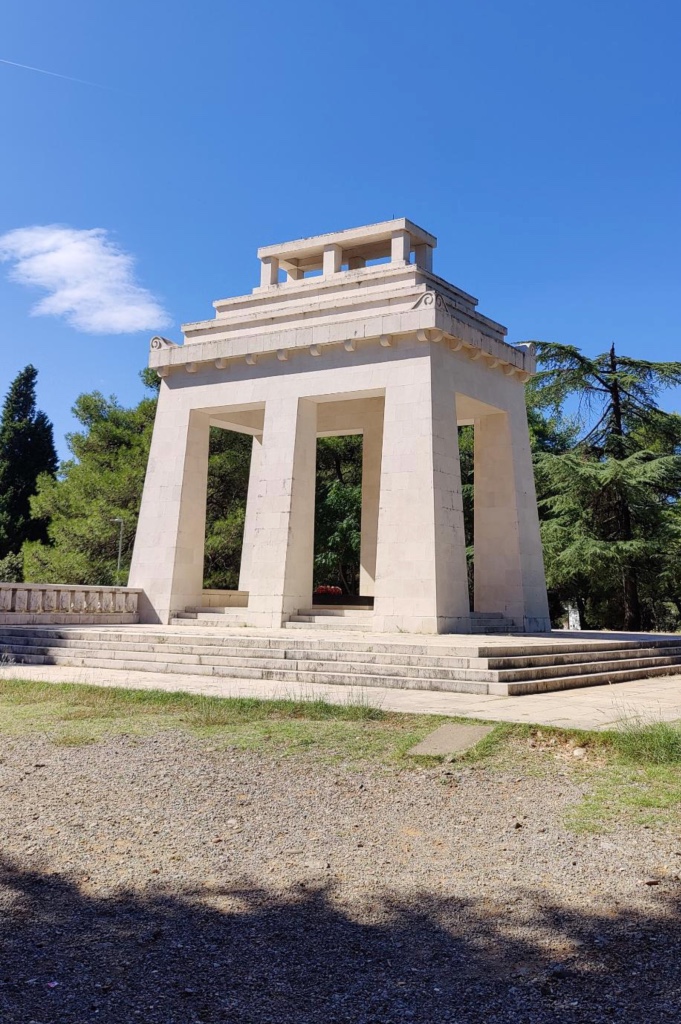
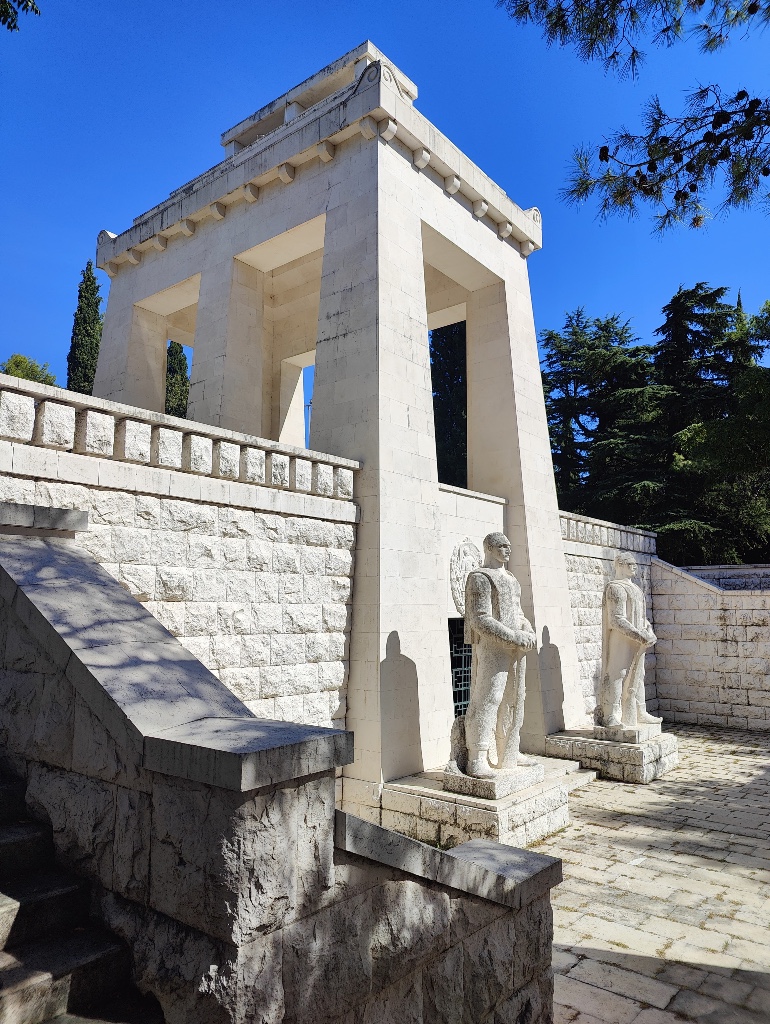
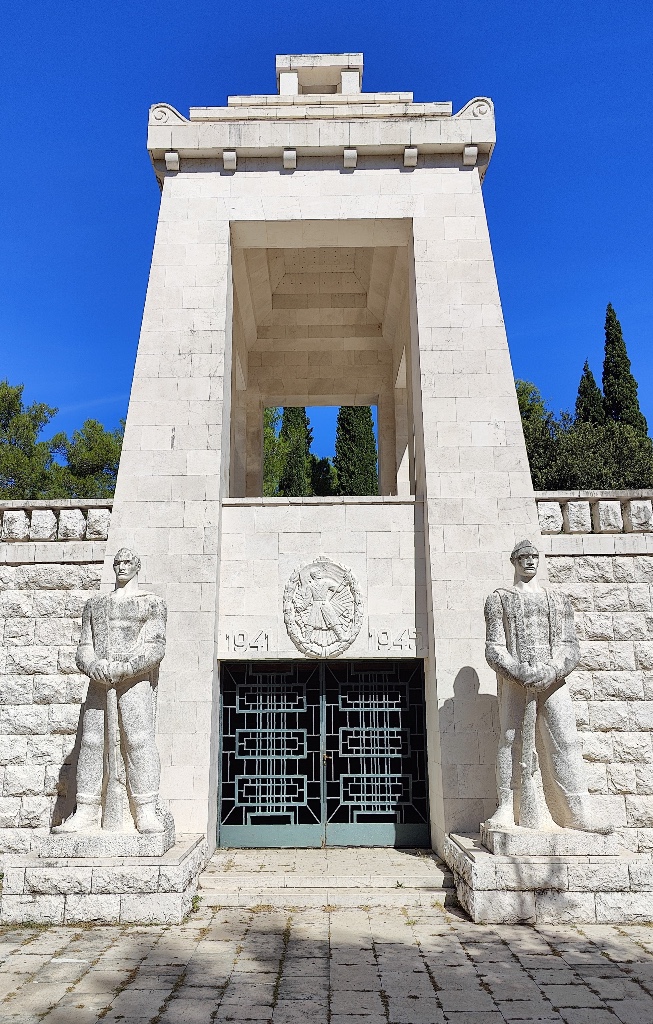
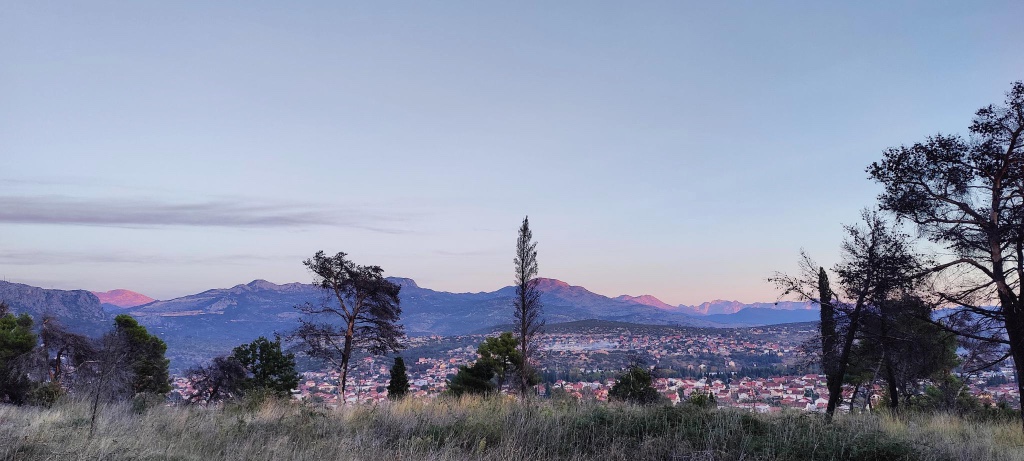
The panoramic views from the peak of the park are breathtaking, especially at sunset. The trails light up at dusk so the park can be enjoyed for a night stroll until 11pm. We made a friend one evening there who led us around like he was our tour guide. The animals are so sweet and friendly, it can be both heartwarming and heartbreaking at the same time… enjoying the time you get to spend with such sweet creatures and then having to say goodbye. Like most places in the Balkans, the animals here are taken care of communally. There are food and water bowls throughout the city, mostly small shops and restaurants.

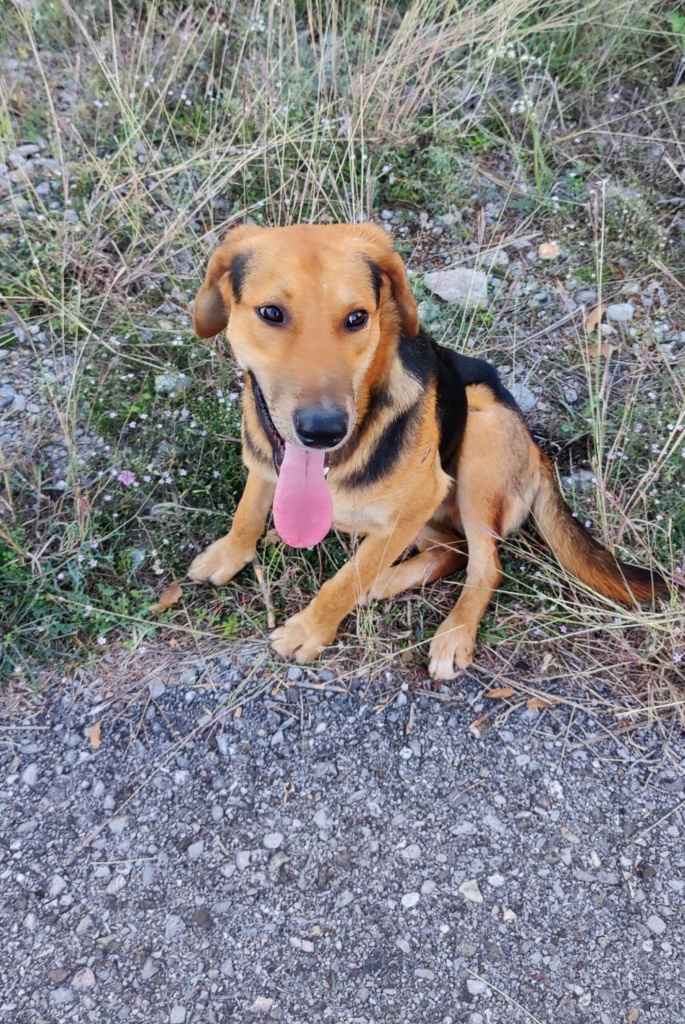
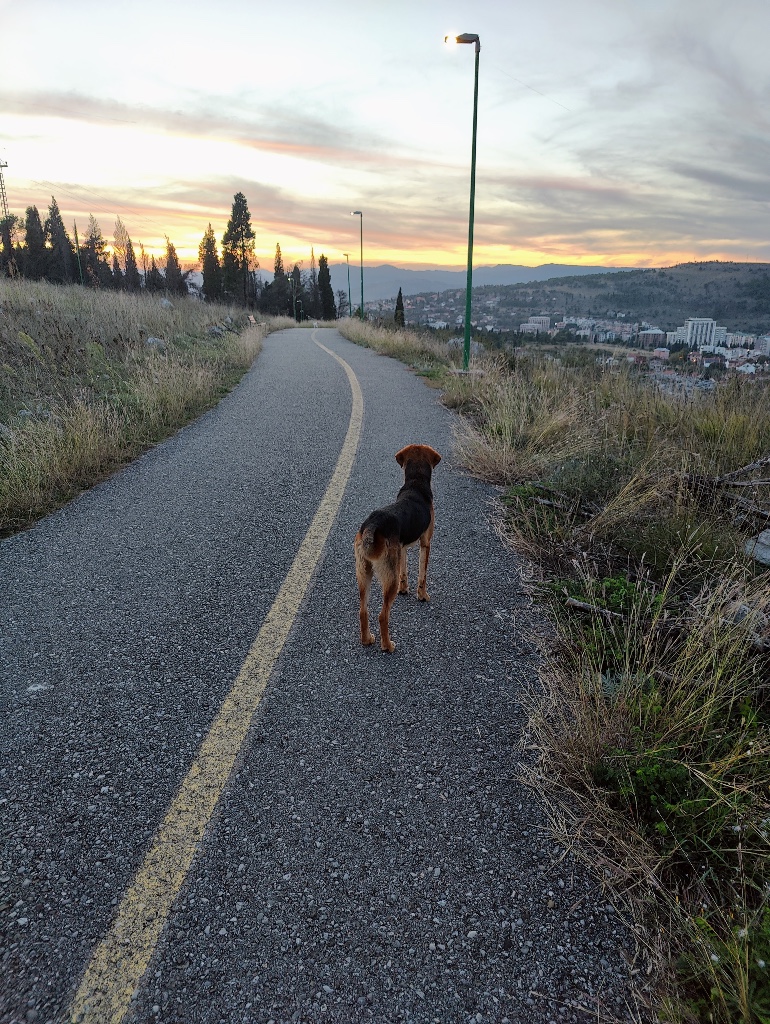
At the entrance of the park is St. George’s Church, the oldest preserved building in Podgorica built between the 9th and 11th centuries. Some modifications have been made to the church, the addition of frescoes painted in the 16th and 17th centuries, also the replacement of the main dome in 1931. It is speculated that there were original frescoes when the church was built that lie under the current ones, but that is yet to be confirmed. The frescoes themselves are in a bad state, but still beautiful in a primitive way. The surrounding grounds have worn slab graves and a small cemetery out back. Unfortunately when we were visiting, the cemetery gates were closed. Careful restoration work continues throughout this historical site to this day.
